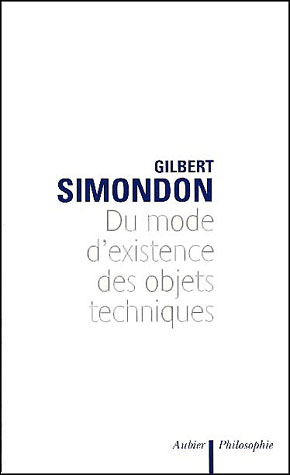Andrej Chudý: Vplyv elektronickej komunikácie na súčasné zmeny v chápaní a zmysle autorstva (2008) [Slovak]
Filed under thesis | Tags: · authorship, commons, copyright, creative commons, electronic communication, interactivity, network society, remediation
Práca načrtáva spoločenské zmeny, ktoré vedú od hierarchických usporiadaní k sieťovým a rozberá akým spôsobom v tomto prostredí umožňuje elektronická komunikácia remediáciu tradičných médií.
Predstavuje chronológiu koncepcií autorstva v západnej kultúre od antiky po súčasnosť. Bližšie skúma význam Múz v antike i stredoveku, anonymitu stredovekých autorov, vzťah orálneho a písaného. Prechádza od vplyvu kníhtlače k vznikajúcej autorskej profesii a súvisiacej koncepcii romantického autora (autor ako génius). Nahliada na literárne a filozofické chápania autorstva v 20. storočí a všíma si aspekty elektronickej kultúry vplývajúce na autorstvo, písanie v hypertextoch. Venuje sa tiež histórii autorského práva a popisuje iniciatívu Creative Commons ako alternatívu k tradičnému autorskému právu.
Analyzuje akú povahu nadobúda autorstvo v prostredí spoločenských médií (blogy, wiki, spoločenské siete) a ukazuje aspekty distribučných modelov, ktoré si potrebuje autor v elektronickom prostredí osvojiť.
Diplomová práca
Univerzita Komenského v Bratislave. Filozofická fakulta; Katedra knižničnej a informačnej vedy
Školiteľ: PhDr. Pavol Rankov, PhD
Bratislava: FiF UK, 2008.
Electronic communication and current changes in the understanding of the notion of authorship
The work outlines the social changes, reaching from the hierarchical organization to the network society, as well as analyses the remediation of the traditional media in the network environment. In the work, there is presented the chronology of the conceptions of authorship in the western culture from the Ancient Period until present.
More info (author)
Comment (0)Joseph Nechvatal: Immersive Ideals / Critical Distances. A Study of the Affinity Between Artistic Ideologies Based in Virtual Reality and Previous Immersive Idioms (1999)
Filed under thesis | Tags: · aesthetics, architecture, art history, immersion, philosophy of art, technology, virtual reality
This thesis researches into the ideals behind Virtual Reality technology (and its central property of total-immersion) by looking at VR through the prism of a philosophy of visual art. Its conclusive understanding is achieved through a broad formulation of an aesthetic theory of immersive consciousness (indicative of an emerging immersive culture) by joining choice immersive examples of simulacra technology into mental connections with relevant examples culled from the histories of art, architecture, information-technology, sex, myth, space, consciousness and philosophy.
Keywords: architecture| Conceptual Art | consciousness | information-technology | myth | sex | space | virtual reality
Written in candidacy for a Ph.D. at the Centre for Advanced Inquiry in the Interactive Arts (CAiiA), University of Wales College, Newport, Wales, U. K.
More info
Later published as a book (2009)
Gilbert Simondon: On the Mode of Existence of Technical Objects (1958–) [FR, EN, ES]
Filed under thesis | Tags: · individuation, philosophy, philosophy of technology, technical object, technics, technology

“The purpose of this study is to attempt to stimulate awareness of the significance of technical objects. Culture has become a system of defense designed to safeguard man from technics. This is the result of the assumption that technical objects contain no human reality. We should like to show that culture fails to take into account that in technical reality there is a human reality, and that, if it is fully to play its role, culture must come to terms with technical entities as part of its body of knowledge and values. Recognition of the modes of existence of technical objects must be the result of philosophic consideration; what philosophy has to achieve in this respect is analogous to what the abolition of slavery achieved in affirming the worth of the individual human being.
The opposition established between the cultural and the technical and between man and machine is wrong and has no foundation. What underlies it is mere ignorance or resentment. It uses a mask of facile humanism to blind us to a reality that is full of human striving and rich in natural forces. This reality is the world of technical objects, the mediators between man and nature.” (from the Introduction)
French edition
Preface by John Hart
Afterword by Yves Deforge
Publisher Aubier, Paris, 1958, 1969, 1989
ISBN 2700718518
English edition, Part I
Translated by Ninian Mellamphy
With a preface by John Hart
Publisher University of Western Ontario, June 1980
98 pages
Commentary (EN)
Du mode d’existence des objets techniques (French, 1958/1969, added on 2014-4-21)
On the Mode of Existence of Technical Objects, Part I (English, trans. Ninian Mellamphy, 1980, added on 2014-4-21). Different version (updated on 2012-8-23).
Du mode d’existence des objets techniques (French, 1958/1989, no OCR, updated on 2014-4-21)
El modo de existencia de los objetos técnicos (Spanish, trans. Margarita Martinez and Pablo Rodriguez, 2007, added on 2014-4-21)

